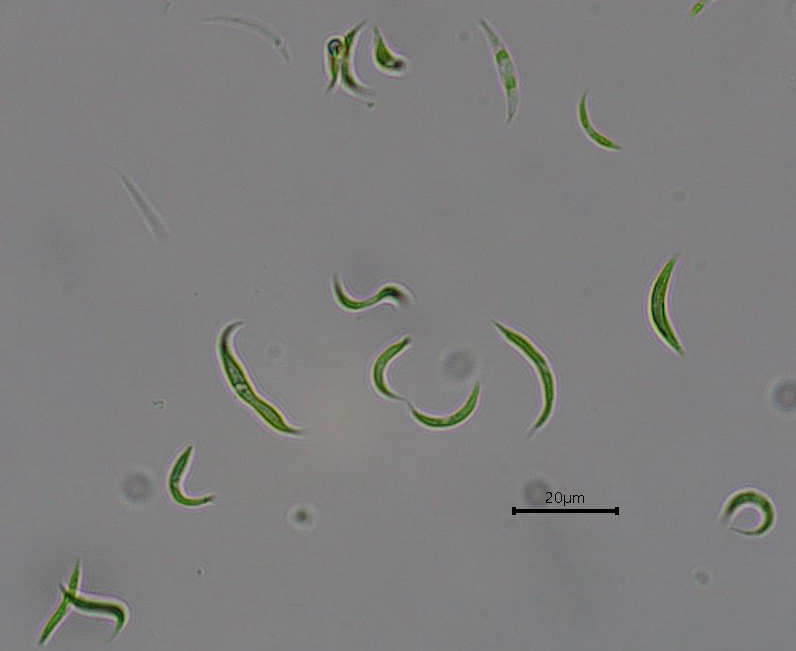


The microalgae species was cultivated in a photobioreactor in the presence of antibiotics commonly used in Brazil and found in water bodies, i.e., residues not removed in the wastewater treatment plant (image: Marcelo Chuei Matsudo)
Published on 05/12/2025
By Thais Szegö | Agência FAPESP – Microalgae of the species Monoraphidium contortum have the ability to remove antibiotic residues from water, especially sulfamethoxazole and trimethoprim. This reduces the risk of environmental contamination, avoiding serious consequences for the ecosystem and human health.
This was the conclusion of a study conducted in partnership by Brazilian researchers affiliated with the Federal University of ABC (UFABC) in Santo André, the Federal University of Itajubá (UNIFEI) in the state of Minas Gerais, and the University of São Paulo (USP), with the support of FAPESP.
The work, published in the Biochemical Engineering Journal, had two fronts. “On one of them, we cultivated the microalgae species in a photobioreactor, a bioreactor that has adequate lighting for the microorganisms to carry out photosynthesis, in the presence of antibiotics that are commonly used in Brazil and found in wastewater and water bodies, i.e., waste from human activities that hasn’t been removed in the wastewater treatment plant and can be released into the environment,” explains Marcelo Chuei Matsudo, professor of biotechnology at UFABC and corresponding author of the article.
To simulate the scenario commonly found in Brazilian nature, the researchers used sulfamethoxazole and trimethoprim, which are among the ten most consumed antibiotics in the country in recent years. “We found that at low concentrations, a condition found in wastewater, there was no damage to the growth of the microalgae, which removed between 27% and 42% of the drugs added to the medium,” says Matsudo. The researcher also points out that in this process the microalgae produced a biomass with potential commercial value, as it showed viability for the production of biodiesel.
On the other front, the researcher Marcus Vinicius Xavier Senra sequenced the genome of this microalga and, using bioinformatics tools, detected the presence of the gene responsible for producing an enzyme that could potentially degrade these pollutants.
Project with environmental and health significance
The results obtained cannot yet be put into practice. “Alongside this work, we intend to study what this behavior would be like under natural conditions, in the effluent from the sewage treatment plant, for example, where the conditions found aren’t the same as those optimized in a photobioreactor with synthetic culture medium for growing microalgae,” says Matsudo.
However, this work opens up an important avenue for several other studies that have yet to be carried out and that are of great importance to the population. This is because antibiotics are not completely metabolized by the human and animal body, and the remaining fraction is excreted in feces and urine and ends up in sewage treatment plants.
Most of these substances are not removed by conventional treatment plants because the treatment processes are not designed for this purpose, and contamination of the environment can occur, with serious consequences for ecosystems and human health by contributing to the increased selection and proliferation of antibiotic-resistant bacterial strains.
There is therefore an urgent need for technologies capable of removing these micropollutants. Ozonation, activated carbon adsorption, and advanced oxidation and membrane separation processes are some of the technologies that have been tested for this purpose, but the high operating costs and the possibility of producing even toxic by-products limit the implementation of these technologies.
“In this context, microalgae-based bioremediation has emerged as a promising approach in conjunction with tertiary treatment of sewage and industrial wastewater,” says the researcher.
The article “Unveiling the antibiotics removal ability of Monoraphidium contortum” can be read at: www.sciencedirect.com/science/article/abs/pii/S1369703X25000592.
Source: https://agencia.fapesp.br/54721